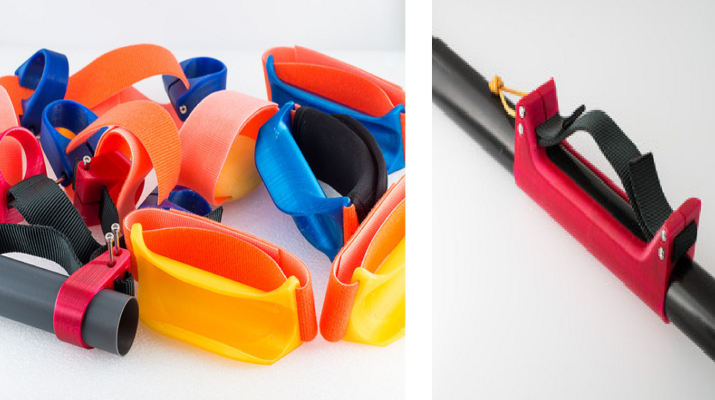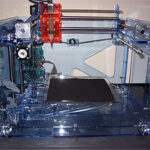

Kayaking is something I’ve never tried before. I have a few relatives who are pretty serious about it as a sport, but I’ve only ever gone canoeing, and that usually involves bumping into rocks and somehow getting turned completely backwards. I believe that kayaking, for me, would be an exercise in going in circles. I do know, however, from talking to people who do it regularly, that kayaking is a workout that engages the entire body, and can be a meditative experience as well. It’s a skill that takes practice, but, I’m told, is an incredibly rewarding one.
Designer and Thingiverse user Walter Hsiao is a huge fan of kayaking, and has been working on creating assistive devices to make it more accessible to people with disabilities. Currently, he is working on a series of 3D printed assistive paddling grips for kayakers with disabilities, to allow them more control and better grip. Hsiao describes the assistive grips as a work in progress, and has printed several versions so far, using one-inch webbing and Velcro One-Wrap ties to secure them. Eventually he hopes to use ties that can be more easily tightened or integrated into gloves. He hasn’t perfected the design yet, but he is experimenting.
“These are a continuing work in progress and none of these work as well as I would like,” says Hsiao. “Some of the designs may be effective for casual paddling but I don’t think they’re adequate for open ocean kayaking.”

The paddling grip design is not Hsiao’s first venture into the creation of assistive devices. In September, he participated in the Bay Area Makeathon, which placed its focus this year on the invention of devices to help people with disabilities. Hsiao’s team worked on a project that endeavored to adapt a kayak and paddle for use by a quadriplegic.
He has worked with Environmental Traveling Companions, an organization that makes outdoor sports and travel accessible to disadvantaged youth and people with disabilities. His website, where he shares his experiments and experiences with 3D printing, is full of designs he has created to complement his passion for backpacking and other outdoor sports.
Hsiao’s first iterations of the assistive paddling grip designs were printed on a RigidBot printer, which he used for all of his designs until he built his own Eustathios printer. He has been using PETG filament for the grips, and advises that they may not work with other types of filaments. Each was designed to fit Werner carbon shaft paddles.
The files can be downloaded from Thingiverse, and the original files are also available on Onshape. Although Hsiao isn’t yet satisfied with his paddling grip design, he certainly seems to have the knowledge, determination and skill to perfect it before long.
What are your thoughts on yet another creative way for 3D printing to help the disabled? Let us know in the 3D Printed Assistive Paddle Grip forum thread on 3DPB.com.
When it comes to 3D real estate visualization in the USA, our service provides the perfect solution for bringing property listings to life. Through our platform, you can easily access cutting-edge 3D renderings that showcase your real estate projects in a way that attracts potential buyers and investors. Whether it's residential, commercial, or mixed-use properties, our team of experts uses advanced technology to create immersive visualizations that highlight the best features of your property, making it easier for clients to imagine the space as their own.
Through our website, you can quickly get high-quality 3D real estate visualizations that are tailored to your specific needs. With our help, you'll stand out in the competitive real estate market by offering potential buyers a realistic, interactive view of your property. Our efficient process ensures a fast turnaround time, while our attention to detail guarantees that every aspect of the property is represented accurately, giving you a powerful marketing tool to promote your real estate listings.






